1,578 days, 2,409 entries ...
Newsticker, link list, time machine: HOLO.mg/stream logs emerging trajectories in art, science, technology, and culture––every day
Martina Menegon’s interactive self-portrait I’m sorry I made you feel that way (2023) opens at discotec, Vienna, exploring new forms of care for our hybrid selves. Menegon’s blobby CGI avatar, generated with AI and personal biometric data, will show signs of deterioration the more the artist’s physical needs are neglected. When stressed, for example, the virtual portrait will refuse interaction and, eventually, dissolve into glitched abstraction. An AR extension adds a sculptural layer, spilling Menegon’s failing frame into the gallery.
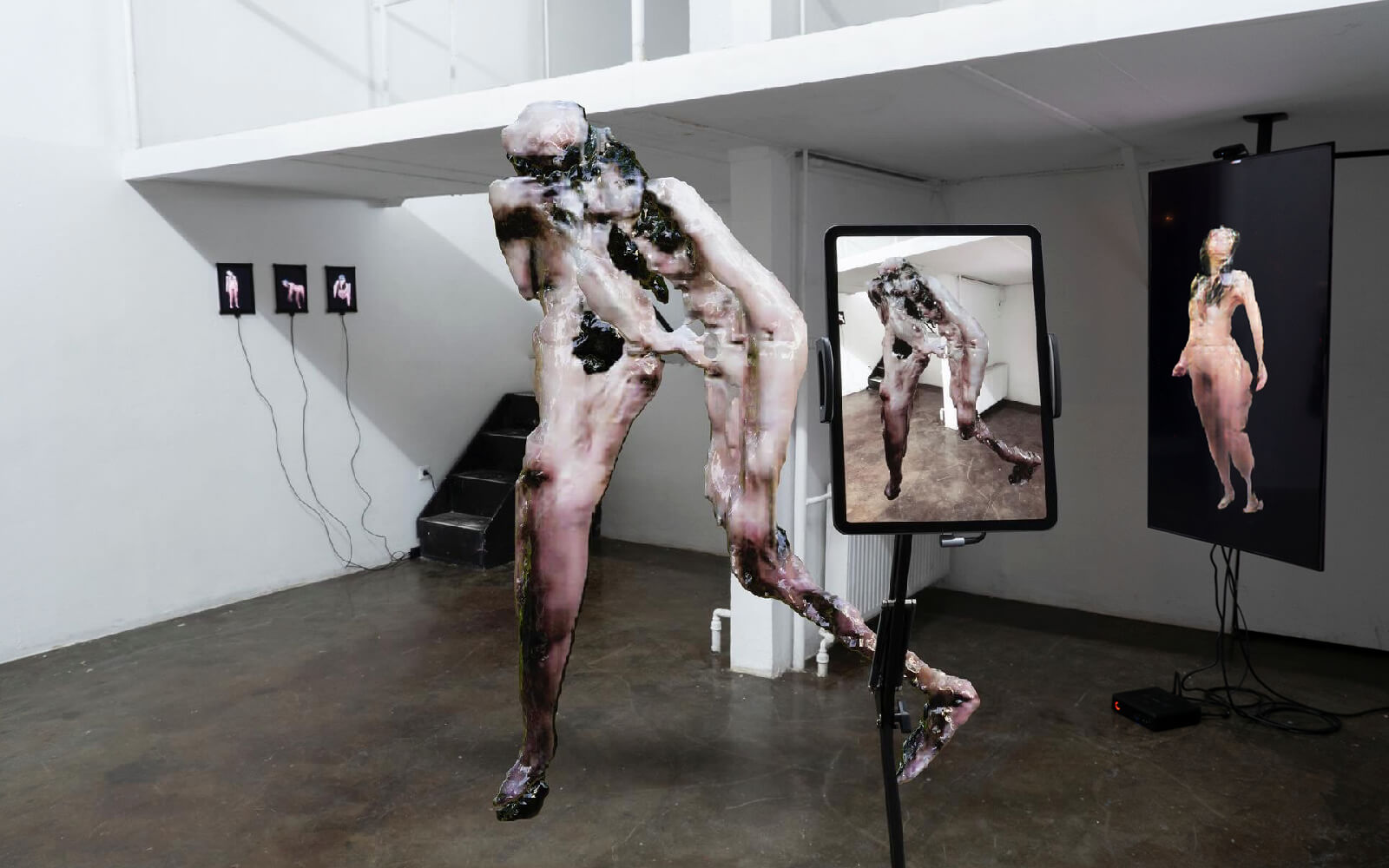
“Glitch. The Art of Interference” opens at Munich’s Pinakothek der Moderne, offering a comprehensive institutional survey of “one of the youngest and most unpredictable forms of art.” Curators Franziska Kunze and Katrin Bauer present works by 50 international artists that trace the interrogation of media and its malfunction from the digital era (Rosa Menkman, !Mediengruppe Bitnik & Sven König, JODI) back to glitch art’s analog roots (Nam June Paik, Peter Weibel, Pipilotti Rist, Sondra Perry).
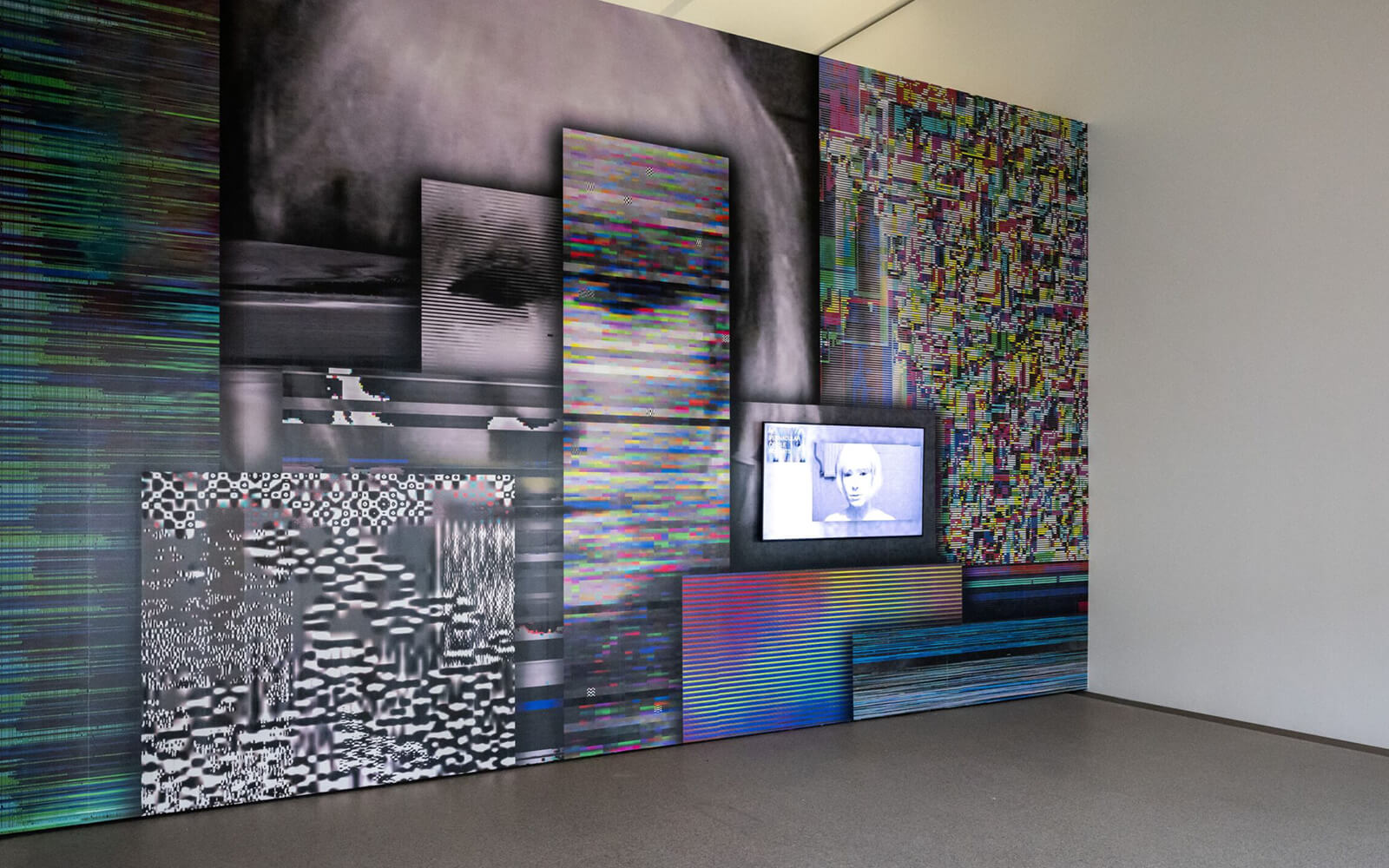
“My theory is that the glitches are very similar to our subconscious. There is too much or too little wanted from us, and we react with psychosomatic problems. When our body glitches, it’s telling us we have to make a decision or change something.”
“Error & Power” opens at Artcore Gallery, Derby (UK), presenting the output of Naho Matsuda and Neale Willis’ residency. For nearly a year, the two artists explored “spaces of chance” and “the potential for mistakes and errors to shape their work,” writes curator Aisling Ward. Matsuda’s Blue Girl, for example, reimagines the ‘learning test’ of Stanley Milgram’s Obedience Experiment, while Willis’ placement of .JPG and Untitled computer equipment (image) manifests symbols of cybernetic serendipity.
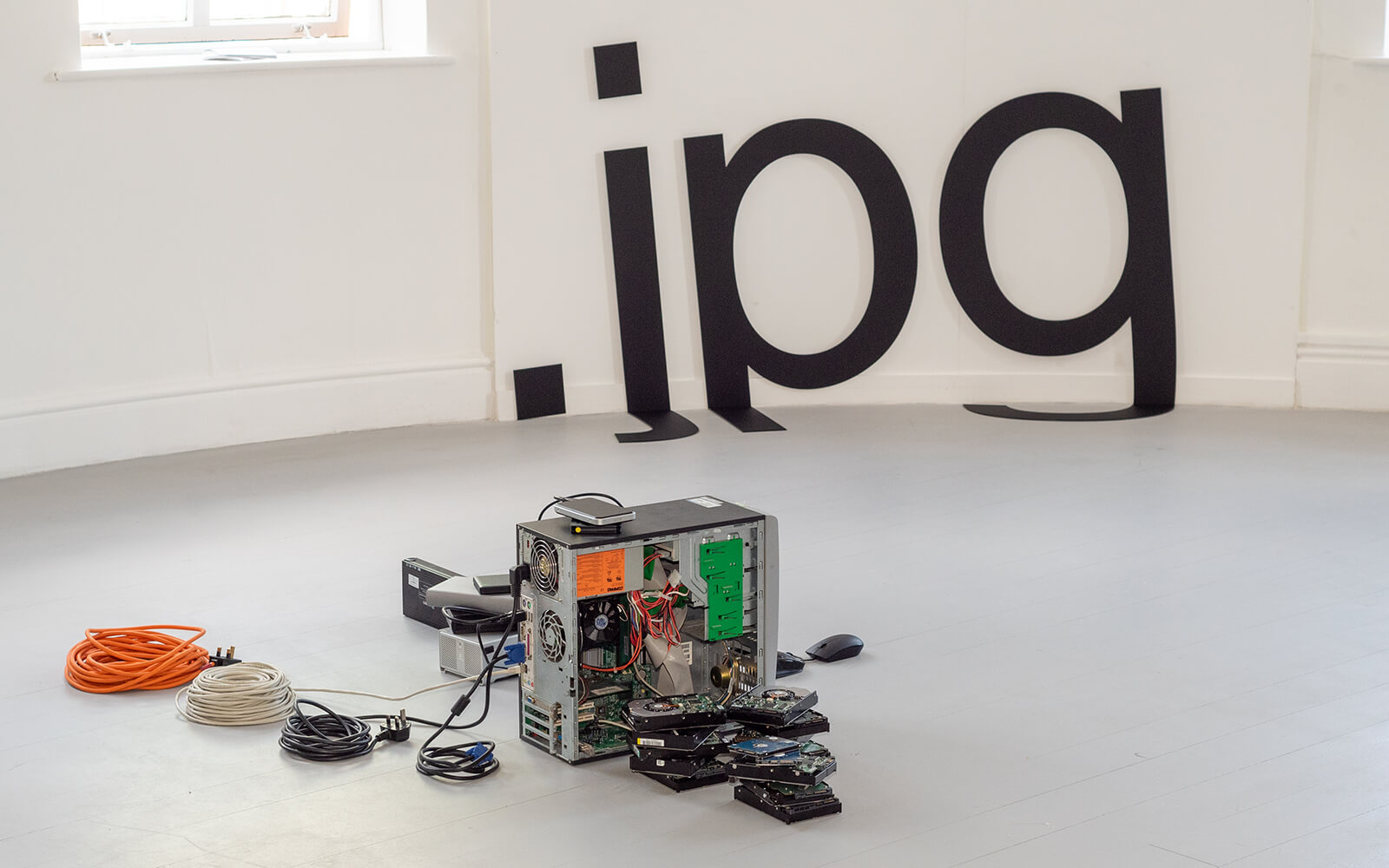
Instigated by artist Rosa Menkman and featuring works by Memo Akten, Sophie Dyer & Sasha Engelmann, Susan Schuppli, UCNV, Alan Warburton, and others, “im/possible images” opens at Lothringer 13 Halle, Munich. The exhibition extends out of Menkman’s research into digital image infrastructures and kicks off a two-month summer school exploring the conditions of image making today: “How do resolutions shape images? How has the field of computer simulation expanded the rules and functioning of our imagery? Can one listen to an image?”
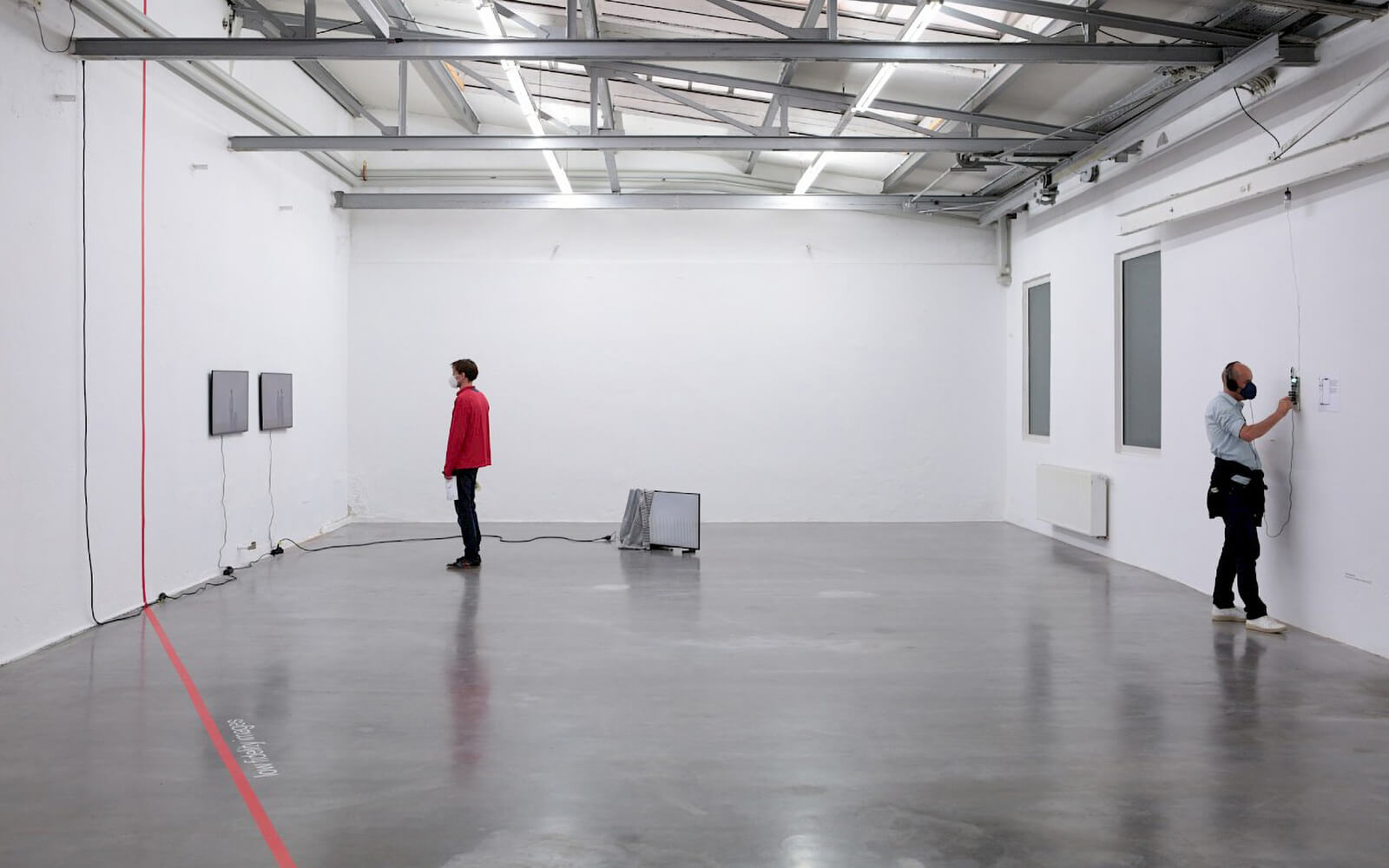
“The aesthetic of the glitch reveals the intrinsic mechanisms of a digital environment—a fleeting moment in which the interruption of fluidity becomes a symbol of new awareness and possibility of choice.”
In It Takes More than the Past to Understand and Build the Archive (2020), a new video essay commissioned for the “Future of Digital Archives and Collections” issue of Stedelijk Studies, Dutch glitch artist Rosa Menkman revisits her seminal work A Vernacular of File Formats (2009-10). The video reveals the historical, social, and chance contexts that inspired her research into image encoding and data syntax systems, and how our relationship to images and data have evolved since.
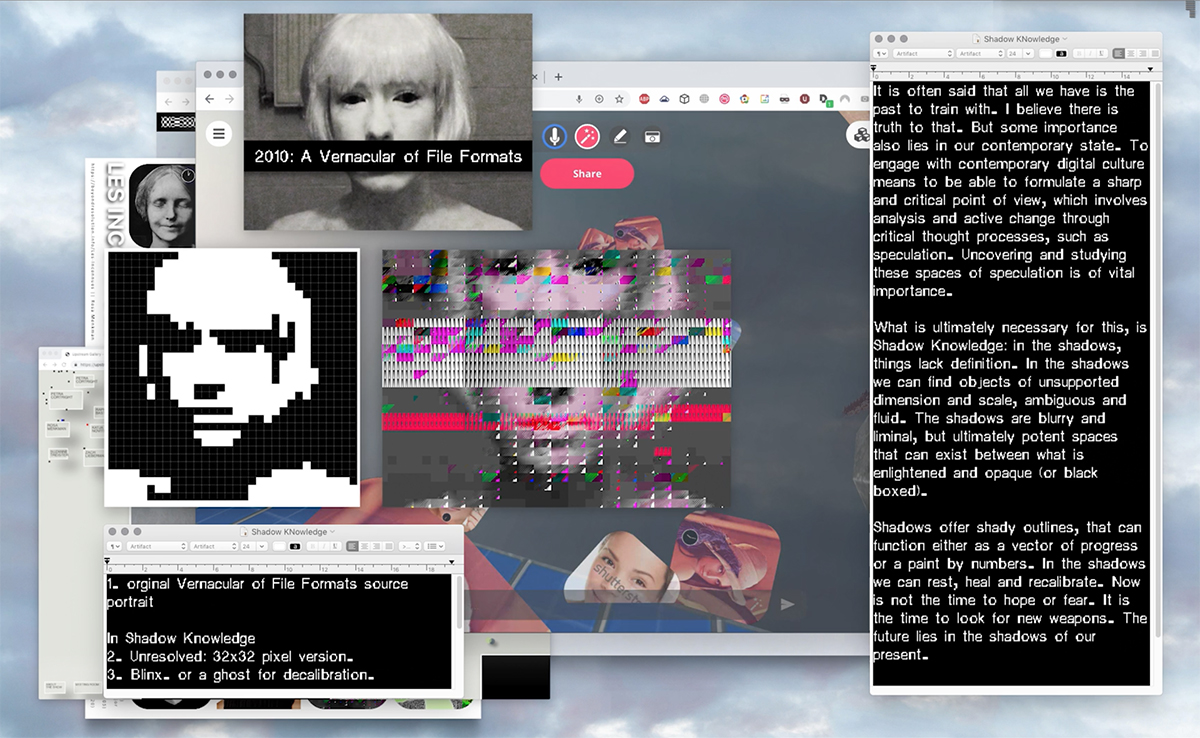
Daily discoveries at the nexus of art, science, technology, and culture: Get full access by becoming a HOLO Reader!
- Perspective: research, long-form analysis, and critical commentary
- Encounters: in-depth artist profiles and studio visits of pioneers and key innovators
- Stream: a timeline and news archive with 1,200+ entries and counting
- Edition: HOLO’s annual collector’s edition that captures the calendar year in print

